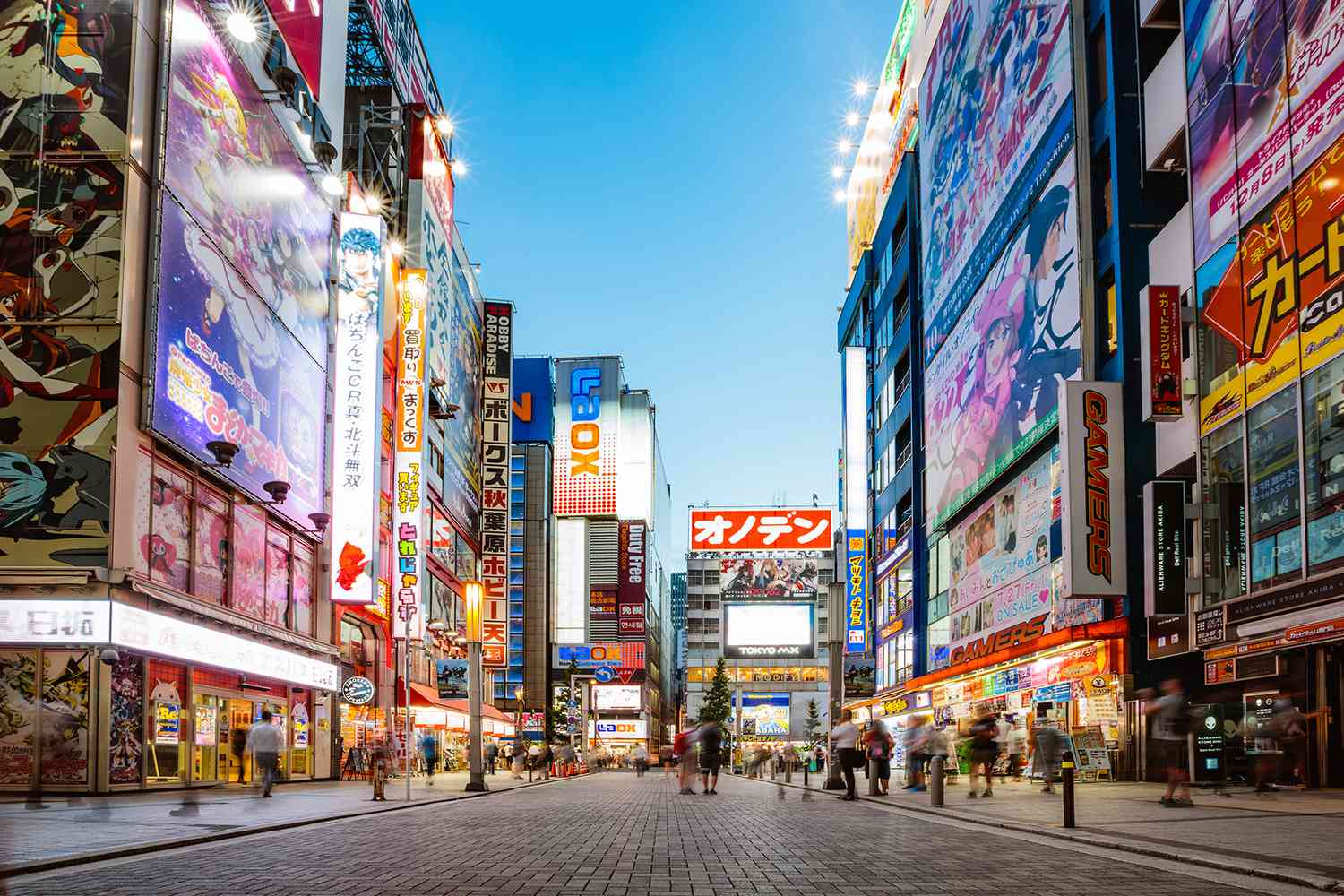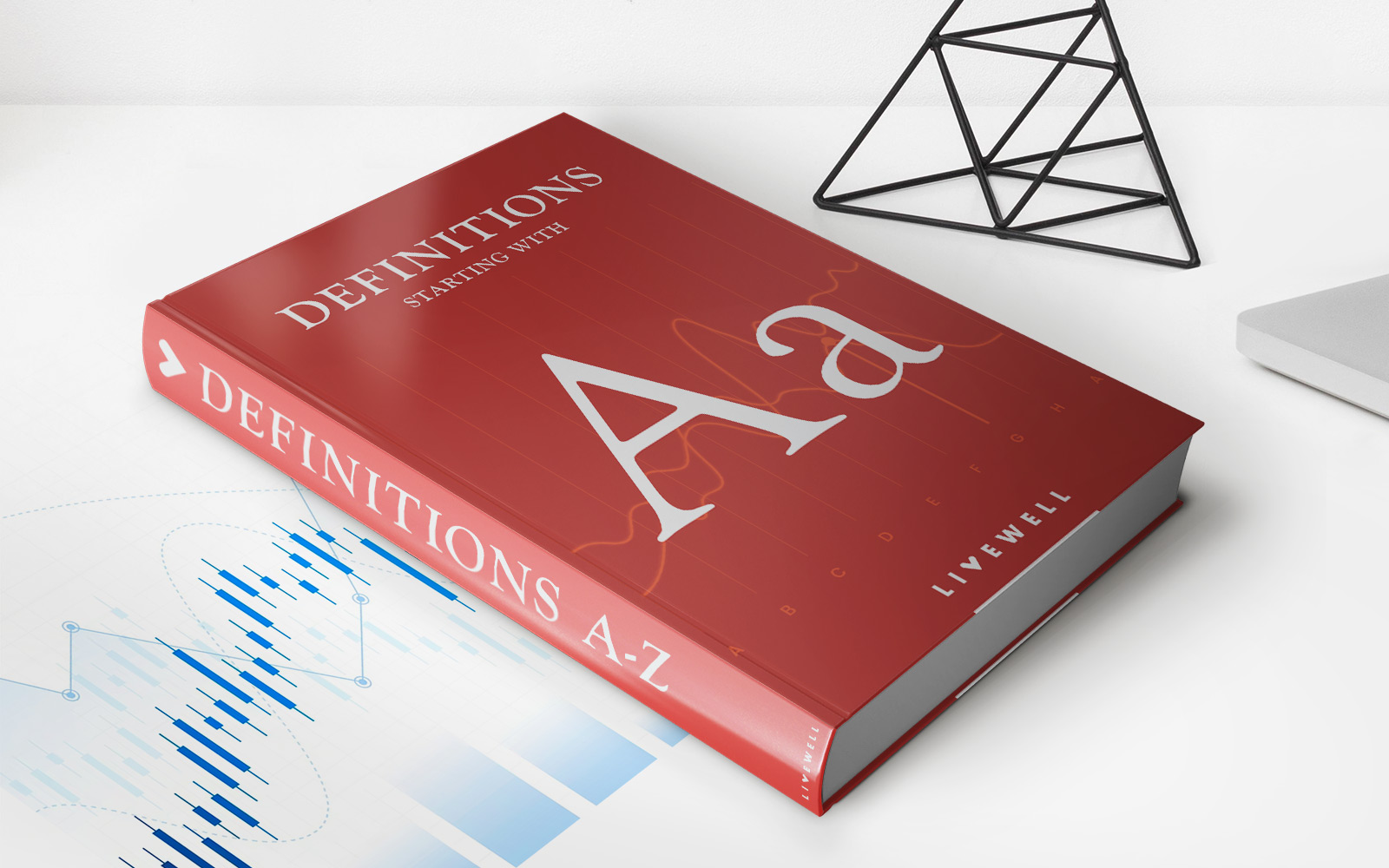

Finance
Why Is Japan’s Inflation So Low?
Published: October 19, 2023
Discover the reasons behind Japan's persistently low inflation and its impact on the finance sector. Explore the factors influencing this economic phenomenon.
(Many of the links in this article redirect to a specific reviewed product. Your purchase of these products through affiliate links helps to generate commission for LiveWell, at no extra cost. Learn more)
Table of Contents
Introduction
Japan, known for its technological advancements, rich cultural heritage, and thriving economy, also faces a unique economic challenge – persistently low inflation. Inflation refers to the general increase in prices of goods and services over time, and it is an essential factor for sustainable economic growth. However, Japan has been grappling with low inflation rates for several years, prompting economists and policymakers to delve deeper into the underlying causes.
Low inflation can have far-reaching consequences for an economy. It can hamper consumer spending, discourage businesses from investing, and hinder economic progress. The prolonged period of low inflation in Japan has raised concerns about the potential impact on its long-term economic stability and the effectiveness of the monetary policy measures taken by the government and central bank.
This article will delve into the reasons behind Japan’s low inflation and explore various factors that contribute to this unique economic phenomenon. From the historical background to the current policy challenges, we will analyze the complex web of issues that Japan faces in its pursuit of higher inflation rates.
Historical Background
To understand Japan’s low inflation, it is crucial to examine the country’s historical context. Japan experienced rapid economic growth in the post-World War II era, emerging as one of the world’s leading economies. However, in the 1990s, the nation faced an economic downturn that came to be known as the “Lost Decade.”
During this period, Japan faced a severe asset price bubble collapse and struggled with deflation, where prices continued to decline rather than rise. This deflationary spiral had a profound impact on the economy, as consumers delayed purchases in anticipation of further price drops, leading to reduced business activity and stagnant wages.
The Japanese government and the Bank of Japan (BOJ) implemented various monetary and fiscal measures to combat deflation and stimulate economic growth. These measures included low-interest rates, quantitative easing, and fiscal stimulus packages. However, despite these efforts, Japan has continued to grapple with low inflation.
One key factor that has influenced Japan’s economic landscape is the country’s aging population. Japan has one of the highest proportions of elderly citizens globally, leading to a decline in the working-age population and increased dependency ratios. The demographic shift has resulted in a decline in consumption, as older individuals tend to save more and spend less.
Furthermore, Japan’s labor market has undergone significant changes. The rise of part-time and non-regular employment has created a situation where many workers face wage stagnation and limited job security. This has had a dampening effect on consumer spending, further contributing to low inflation.
Additionally, Japan’s economic structure is characterized by stagnant productivity growth and limited competition in certain sectors. This lack of dynamism and innovation has hindered the emergence of new industries and prevented the generation of upward price pressures.
The combination of these factors has created a challenging economic environment for Japan, characterized by low inflation and subdued economic growth. As we delve further into the factors contributing to Japan’s low inflation, it becomes evident that a comprehensive analysis of monetary policy, economic factors, demographic shifts, structural issues, and external influences is necessary to understand the complexities of the situation.
Monetary Policy
Monetary policy plays a crucial role in shaping an economy’s inflationary dynamics, and Japan’s central bank, the Bank of Japan (BOJ), has implemented various measures over the years to combat low inflation. One of the primary tools used by the BOJ is interest rates.
For many years, Japan has maintained ultra-low interest rates, even introducing a negative interest rate policy in 2016. The aim of these policies is to encourage borrowing and spending, stimulating economic activity and ultimately driving inflation higher. However, the effectiveness of these measures has been limited in the face of structural challenges and demographic shifts.
In addition to interest rates, the BOJ has also embraced unconventional monetary policy measures, such as quantitative easing (QE). QE involves purchasing government bonds and other financial assets from commercial banks, injecting liquidity into the economy. The goal is to increase lending, boost investment, and stimulate inflation. The BOJ has implemented multiple rounds of QE over the years, including yield curve control, which aims to keep long-term interest rates at a specific target level.
Despite these efforts, Japan has struggled to achieve its 2% inflation target. The persistent low inflation has led to debates about the effectiveness and limits of monetary policy in stimulating economic activity and raising prices. Some argue that the BOJ’s measures have been insufficient or that additional fiscal stimulus is needed to create inflationary pressures.
Furthermore, the BOJ’s policies have faced challenges due to the global economic landscape. External factors, such as trade tensions, geopolitical risks, and fluctuations in commodity prices, can impact Japan’s inflationary dynamics. For example, a slowdown in global demand can result in reduced export revenues and weaker inflationary pressures.
As Japan continues to grapple with low inflation, economic policymakers and the BOJ face the ongoing challenge of finding a delicate balance between stimulating economic growth, addressing structural issues, and overcoming demographic challenges. The effectiveness of monetary policy in combating low inflation depends on these interconnected factors and requires a comprehensive and adaptive approach.
Economic Factors
Several economic factors contribute to Japan’s persistently low inflation. One key factor is the sluggish consumer spending. Despite efforts to stimulate consumption, Japanese households remain cautious about their spending habits. This cautiousness stems partly from economic uncertainty and a desire to save for the future. The prolonged period of economic stagnation and wage stagnation has also contributed to a lack of purchasing power, further dampening consumer spending and generating downward pressure on prices.
Another factor is the weak corporate investment. Many businesses in Japan have been hesitant to invest in new projects or expand their operations due to factors such as declining population, excess production capacity, and global economic uncertainty. This lack of business investment reduces demand for goods and services, resulting in limited price increases.
The persistent low inflation in Japan is also influenced by the country’s fiscal policies. The government has implemented various stimulus packages aimed at boosting the economy and increasing inflation. However, concerns about the nation’s high debt-to-GDP ratio and the need to balance fiscal stability have limited the scope and effectiveness of these measures.
Furthermore, Japan’s export-oriented economy has faced challenges in recent years. Weak global demand, intensified competition from emerging economies, and fluctuations in exchange rates have hampered the growth of Japanese exports. This has put pressure on businesses to keep prices low in order to remain competitive in the global market.
Additionally, the positive impact of technological advancements on productivity growth in Japan has been insufficient. The limited adoption and integration of automation and digital technologies in various sectors have hindered productivity gains, constraining the overall economic growth and contributing to low inflation.
These economic factors collectively contribute to the ongoing challenge of low inflation in Japan. Policymakers and businesses need to address these factors comprehensively to stimulate economic growth, increase consumer spending, and generate upward pressures on prices.
Demographic Factors
Japan’s demographic landscape has a significant impact on the country’s low inflation. One of the primary demographic factors is the aging population. Japan has one of the highest proportions of elderly citizens globally, and this demographic shift poses challenges to economic growth and inflationary pressures.
As the population ages, the proportion of people in the working-age population decreases. With fewer people actively participating in the labor market, there is a decline in overall economic output and demand. This reduced economic activity contributes to low inflation as consumer spending and business investment remain subdued.
The aging population also influences consumer behavior. Older individuals tend to have different consumption patterns compared to younger consumers. They often prioritize savings for retirement and have lower spending tendencies, which limits the upward pressure on prices that robust consumer spending can bring.
Furthermore, the declining birth rate exacerbates the demographic challenges facing Japan. The country’s low birth rate means there are fewer young people entering the workforce and contributing to economic growth. This demographic imbalance results in a shrinking labor force, further constraining economic activity and potential inflationary pressures.
The aging population also places a burden on the government’s social welfare systems. The increasing demands for healthcare, pension funds, and elderly care services require significant fiscal resources, diverting funds away from other areas that could stimulate economic growth and combat low inflation.
Addressing the demographic challenges for achieving higher inflation in Japan requires comprehensive measures that promote productivity growth, encourage labor force participation, and provide adequate social safety nets. Policymakers need to consider innovative solutions to encourage higher fertility rates and attract young talent to support sustainable economic growth and sustainable inflation levels.
Structural Factors
Structural factors also contribute to Japan’s persistently low inflation. These factors are related to the economy’s underlying structural characteristics, which shape the supply and demand dynamics and influence price levels.
One structural factor is the presence of excess production capacity in certain industries. Over the years, Japan has faced challenges associated with overcapacity in sectors such as steel, electronics, and automobiles. Excess production capacity leads to intense competition among businesses, resulting in reduced profit margins and a reluctance to raise prices.
In addition, Japan’s labor market has experienced a rise in part-time and non-regular employment. These types of employment typically offer lower wages and fewer benefits compared to full-time positions. As a result, workers in non-regular employment may face limited income growth, reducing their purchasing power and contributing to low inflation.
Moreover, Japan’s market structure in some sectors lacks sufficient competition. Certain industries, such as utilities and agriculture, have been slow to liberalize, limiting the potential for cost reductions and efficiency gains. The lack of competition prevents downward pressure on prices and stifles innovation, contributing to low inflation.
Additionally, the advancement of globalization and increased trade integration have led to the outsourcing of production to countries with lower costs. This outsourcing lowers the production costs for Japanese companies but also puts downward pressure on prices as cheaper imported goods flood the domestic market.
Furthermore, the presence of deflationary expectations has become ingrained in Japanese society. After experiencing a prolonged period of deflation, consumers and businesses have come to anticipate and even demand price decreases. This mindset makes it difficult to generate upward price pressures and escape the deflationary cycle.
Addressing Japan’s structural factors requires policy measures that promote competition, increase productivity, and incentivize innovation. Encouraging market reforms and fostering a business environment that supports entrepreneurship can help stimulate economic activity, increase prices, and achieve sustainable inflation levels.
External Factors
External factors also play a role in Japan’s low inflation environment. These factors refer to global economic conditions, trade dynamics, and external shocks that impact the country’s inflationary pressures.
One external factor is the global economic environment. Japan’s economy heavily relies on exports, and changes in global demand can directly impact its inflation rate. Weak global economic growth or a slowdown in major trading partners can reduce export revenues and weaken the inflationary pressures stemming from external demand.
Trade dynamics and exchange rates also influence Japan’s inflation. Fluctuations in exchange rates can impact the competitiveness of Japanese exports. A stronger Japanese yen can make the country’s goods and services relatively more expensive, potentially leading to reduced demand and lower inflation. On the other hand, a weaker yen can boost export competitiveness and potentially lead to higher inflation in the economy.
In recent years, geopolitical tensions and trade disputes have created uncertainties and disruptions in global trade. Tariffs and trade restrictions can negatively impact Japan’s export-oriented industries, making it difficult for businesses to raise prices and contributing to low inflation levels.
Commodity prices, such as oil, also have an impact on Japan’s inflation. Fluctuations in energy prices can affect production costs and consumer spending. A significant increase in energy prices can put upward pressure on inflation, while a decline can have deflationary effects.
External shocks, such as natural disasters or pandemics, can also influence Japan’s inflation dynamics. These events disrupt economic activity and can lead to a decline in production and consumption. The impact of such shocks on inflation depends on the severity and duration of the event.
Addressing external factors that contribute to low inflation requires a proactive approach to managing global trade relationships, diversifying export markets, and building resilience to external shocks. Additionally, monitoring and responding to shifts in global economic conditions and exchange rates are important for maintaining price stability and promoting sustainable inflationary pressures.
Policy Challenges
Japan’s persistent low inflation presents policymakers with numerous challenges in their pursuit of achieving sustainable economic growth and price stability.
One of the key challenges is striking the right balance between monetary and fiscal policy measures. The Bank of Japan (BOJ) has implemented unconventional monetary policy tools, such as low interest rates and quantitative easing, to stimulate inflation. However, the effectiveness of these measures has been limited, and there are concerns about the potential risks associated with prolonged loose monetary policy. Finding the appropriate mix of monetary and fiscal policies to support economic activity and generate inflationary pressures is a complex task.
Another challenge lies in addressing Japan’s structural issues. The country’s demographics, with an aging population and labor market dynamics, pose significant hurdles to sustainable economic growth and higher inflation. Policymakers need to implement measures to increase labor force participation, promote innovative industries, and foster entrepreneurship to enhance productivity and generate upward pressure on prices.
Furthermore, fiscal challenges add another layer of complexity. Japan has one of the highest debt-to-GDP ratios in the world, limiting the scope for expansive fiscal policy to boost inflation. Balancing the need for fiscal stability while implementing targeted measures to stimulate economic growth remains a delicate task.
Additionally, external factors, such as global economic uncertainties and trade tensions, pose challenges for Japan’s inflation management. Addressing these challenges requires effective trade policies, diversifying export markets, and ensuring resilience to external shocks that can adversely impact the inflation outlook.
Moreover, changing public perception and expectations regarding inflation present a challenge. After experiencing a prolonged period of deflation, there is a risk of deflationary expectations becoming ingrained in the mindset of consumers and businesses. Overcoming these expectations and creating a shift towards an inflationary mindset requires effective communication and coordinated policy actions.
Lastly, balancing short-term inflation targets with long-term economic goals poses a policy challenge. The pursuit of higher inflation should be aligned with sustainable economic growth, financial stability, and the well-being of the citizens. Striking a balance between these objectives has become increasingly important in Japan’s policy agenda.
Addressing these policy challenges requires a multi-faceted approach that combines monetary, fiscal, and structural policies. Policymakers need to navigate through these challenges with a well-rounded and adaptable strategy to achieve their goals of sustained economic growth and price stability.
Conclusion
Japan’s ongoing struggle with low inflation is a complex issue influenced by a combination of historical, economic, demographic, structural, and external factors. The nation’s experience with deflation during the Lost Decade and subsequent challenges in achieving sustained inflation have prompted policymakers to examine the root causes and search for effective solutions.
The combination of cautious consumer spending, weak corporate investment, and fiscal challenges has contributed to the prolonged period of low inflation in Japan. Demographic factors, such as an aging population and declining birth rate, have further exacerbated the situation by reducing labor force participation and consumption levels.
Structural factors, including excess production capacity and limited competition in certain sectors, have hindered price increases and innovation. External factors, such as global economic conditions and trade dynamics, have also influenced Japan’s inflationary pressures.
Addressing Japan’s low inflation environment requires a comprehensive and adaptive approach. Policymakers need to carefully balance monetary and fiscal policy measures, while simultaneously addressing structural challenges and demographic shifts. Promoting competition, productivity growth, and innovation can help stimulate economic activity and generate upward pressures on prices.
Managing external factors, such as global economic uncertainties and trade tensions, requires proactive trade policies and strategies to ensure resilience to external shocks. Additionally, effectively communicating and shaping public perception and expectations about inflation is crucial for achieving sustainable price stability.
While the path to higher inflation remains challenging, Japan’s policymakers are committed to finding innovative solutions to stimulate economic growth and achieve their inflation targets. By implementing carefully crafted policies, fostering a favorable business environment, and fostering social and economic resilience, Japan can navigate the complexities of low inflation and build a foundation for sustainable economic development.














